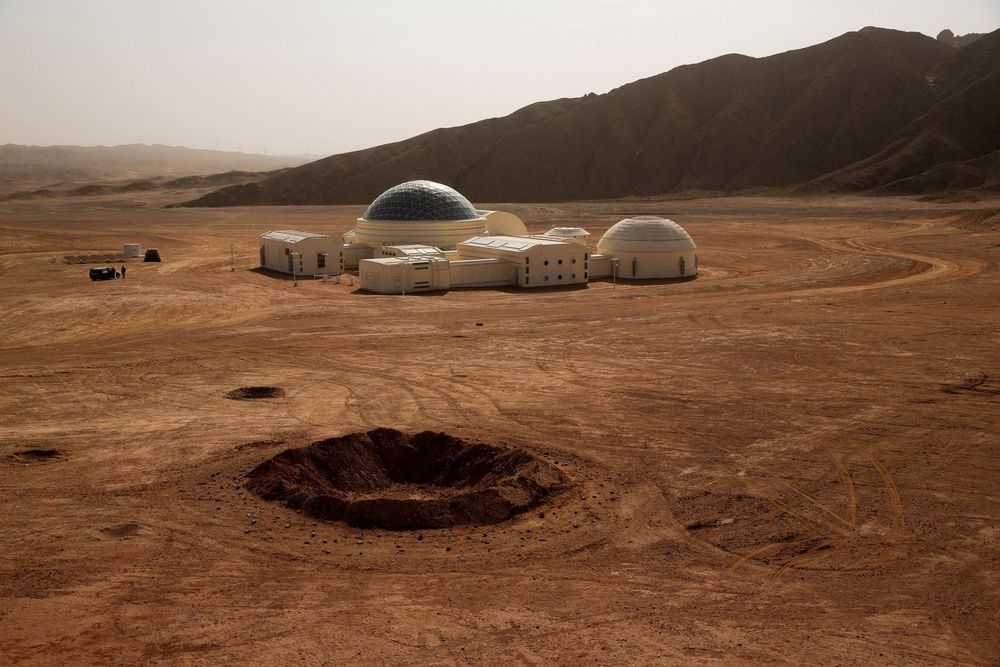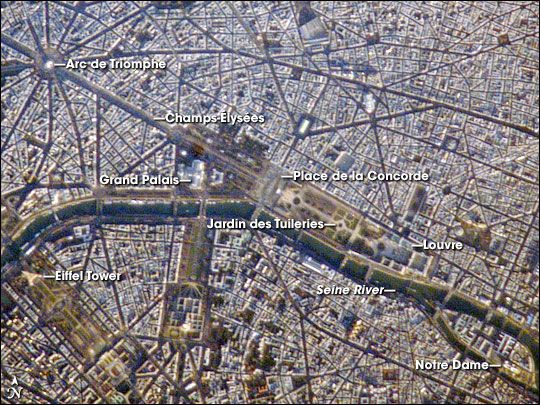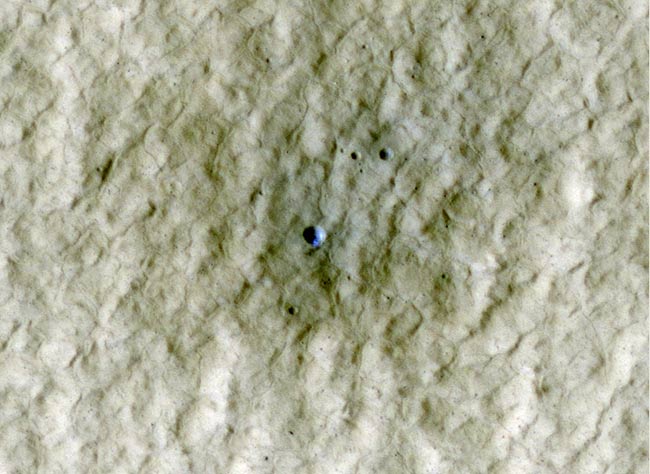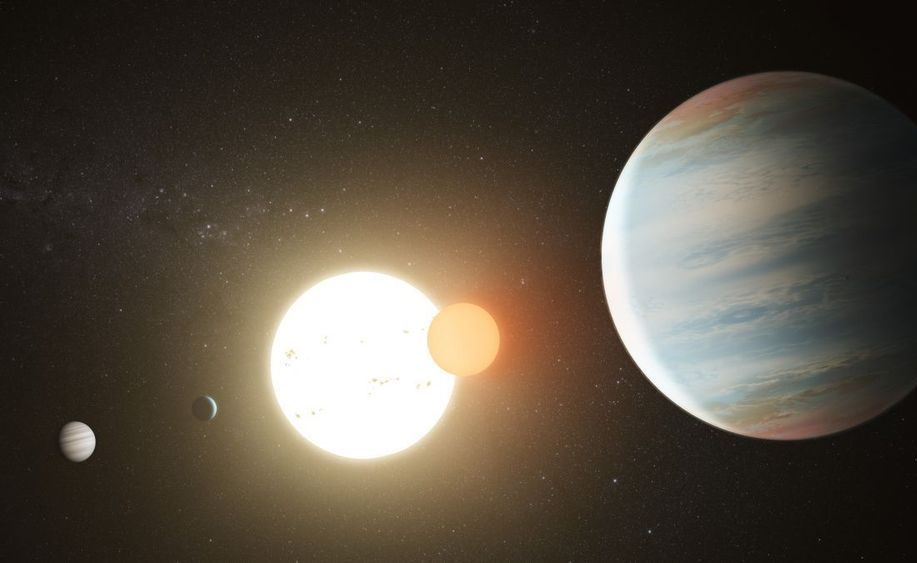NASA has announced the 18 projects awarded funding in its NASA Innovative Advanced Concepts (NIAC) programme.


NASA has announced the 18 projects awarded funding in its NASA Innovative Advanced Concepts (NIAC) programme.



Tourist spots in Paris, France… including Notre Dame. #NotreDame
A crisp, clear winter day over France provided the International Space Station a detailed view of the city of Paris. This image, rotated and cropped from the original, shows the recognizable street pattern of the city—and some of the world’s most notable landmarks—along the Seine River. One of the main avenues radiating like spokes from the Arc de Triomphe (image upper left) is the Avenue des Champs-Élysées running southeast to the Garden of Tuileries (Jardin des Tuileries).
The garden—recognizable by its light green color relative to the surrounding built materials—was originally commissioned by Catherine de Medici in 1559, and is now bounded by the Place de la Concorde to the northeast and the Louvre museum along the Seine River at the southeast end. Other, similarly colored parks and greenspaces are visible throughout the image. Farther south on the Seine is the Íle de la Cité, location of the famous Notre Dame cathedral. Perhaps most prominent is the characteristic €œA € profile of the Eiffel Tower west of the Jardin des Tuileries, highlighted by morning sunlight.
Astronaut photograph ISS016-E-21564 was acquired on January 7, 2008 with a Kodak 760C digital camera fitted with a 800 mm lens, and is provided by the ISS Crew Earth Observations experiment. The image was taken by the Expedition 16 crew, and is provided by the Image Science & Analysis Laboratory, Johnson Space Center. The image in this article has been cropped and enhanced to improve contrast. Lens artifacts have been removed. The International Space Station Program supports the laboratory to help astronauts take pictures of Earth that will be of the greatest value to scientists and the public, and to make those images freely available on the Internet. Additional images taken by astronauts and cosmonauts can be viewed at the NASA/JSC Gateway to Astronaut Photography of Earth. Caption by Cynthia A Evans, NASA-JSC.

In the desert hills of China’s Gansu province, a company called C-Space has just opened “Mars Base 1,” a simulated Martian base of operations for future astronauts. Plans for the base, currently an educational facility, include expansion—becoming more of a tourist destination soon, adding a space-themed hotel and restaurant. Photographers were on hand as some of the first student groups arrived to tour this vision of Mars in the China’s Gobi desert.

A mere 17–20 meters across, the Chelyabinsk meteor caused extensive ground damage and numerous injuries when it exploded on impact with Earth’s atmosphere in February 2013.
To prevent another such impact, Amy Mainzer and colleagues use a simple yet ingenious way to spot these tiny near-Earth objects (NEOs) as they hurtle toward the planet. She is the principal investigator of NASA’s asteroid hunting mission at the Jet Propulsion Laboratory in Pasadena, California, and will outline the work of NASA’s Planetary Defense Coordination Office this week at the American Physical Society April Meeting in Denver—including her team’s NEO recognition method and how it will aid the efforts to prevent future Earth impacts.
“If we find an object only a few days from impact, it greatly limits our choices, so in our search efforts we’ve focused on finding NEOs when they are further away from Earth, providing the maximum amount of time and opening up a wider range of mitigation possibilities,” Mainzer said.

On its final flyby of Saturn’s largest moon in 2017, NASA’s Cassini spacecraft gathered radar data revealing that the small liquid lakes in Titan’s northern hemisphere are surprisingly deep, perched atop hills and filled with methane.
The new findings, published April 15 in Nature Astronomy, are the first confirmation of just how deep some of Titan’s lakes are (more than 300 feet, or 100 meters) and of their composition. They provide new information about the way liquid methane rains on, evaporates from and seeps into Titan—the only planetary body in our solar system other than Earth known to have stable liquid on its surface.
Scientists have known that Titan’s hydrologic cycle works similarly to Earth’s—with one major difference. Instead of water evaporating from seas, forming clouds and rain, Titan does it all with methane and ethane. We tend to think of these hydrocarbons as a gas on Earth, unless they’re pressurized in a tank. But Titan is so cold that they behave as liquids, like gasoline at room temperature on our planet.


Kepler-47 is a roughly 3.5-billion-year-old system located 3,340 light-years from Earth. One of its stars is quite sunlike, but the other is considerably smaller, harboring just one-third the mass of our sun. The two stars orbit their common center of mass once every 7.45 Earth days.
Back in 2012, Welsh and his colleagues, led by fellow SDSU astronomer Jerome Orosz, announced the discovery of two planets circling the two stars. These worlds, Kepler-47b and Kepler-47c, both have two suns in their skies, just like Luke Skywalker’s home planet of Tatooine in the “Star Wars” universe.
The news we had finally found ripples in space-time reverberated around the world in 2015. Now it seems they might have been an illusion.
LIGO’s detectorsEnrico Sacchetti
THERE was never much doubt that we would observe gravitational waves sooner or later. This rhythmic squeezing and stretching of space and time is a natural consequence of one of science’s most well-established theories, Einstein’s general relativity. So when we built a machine capable of observing the waves, it seemed that it would be only a matter of time before a detection.